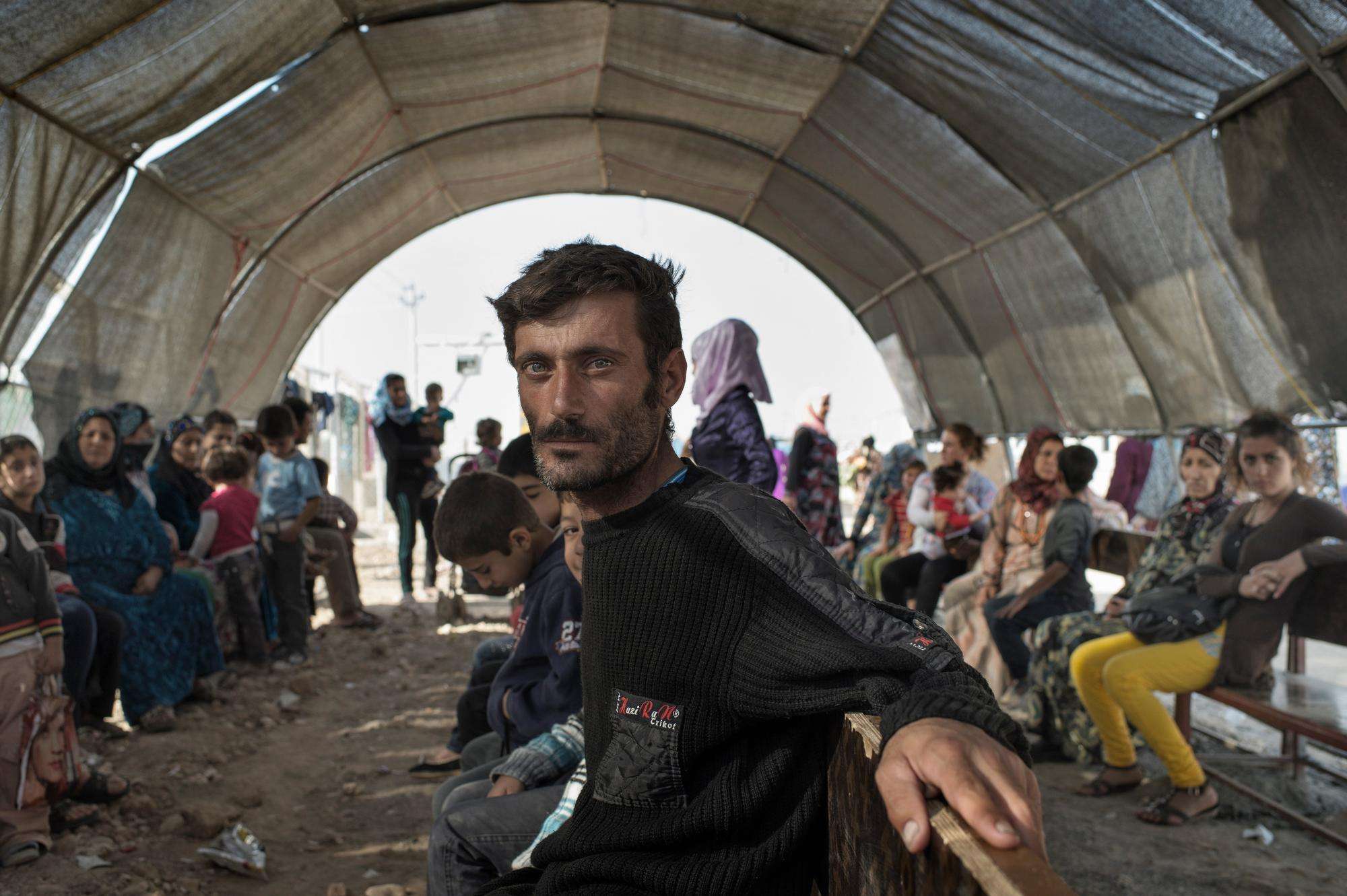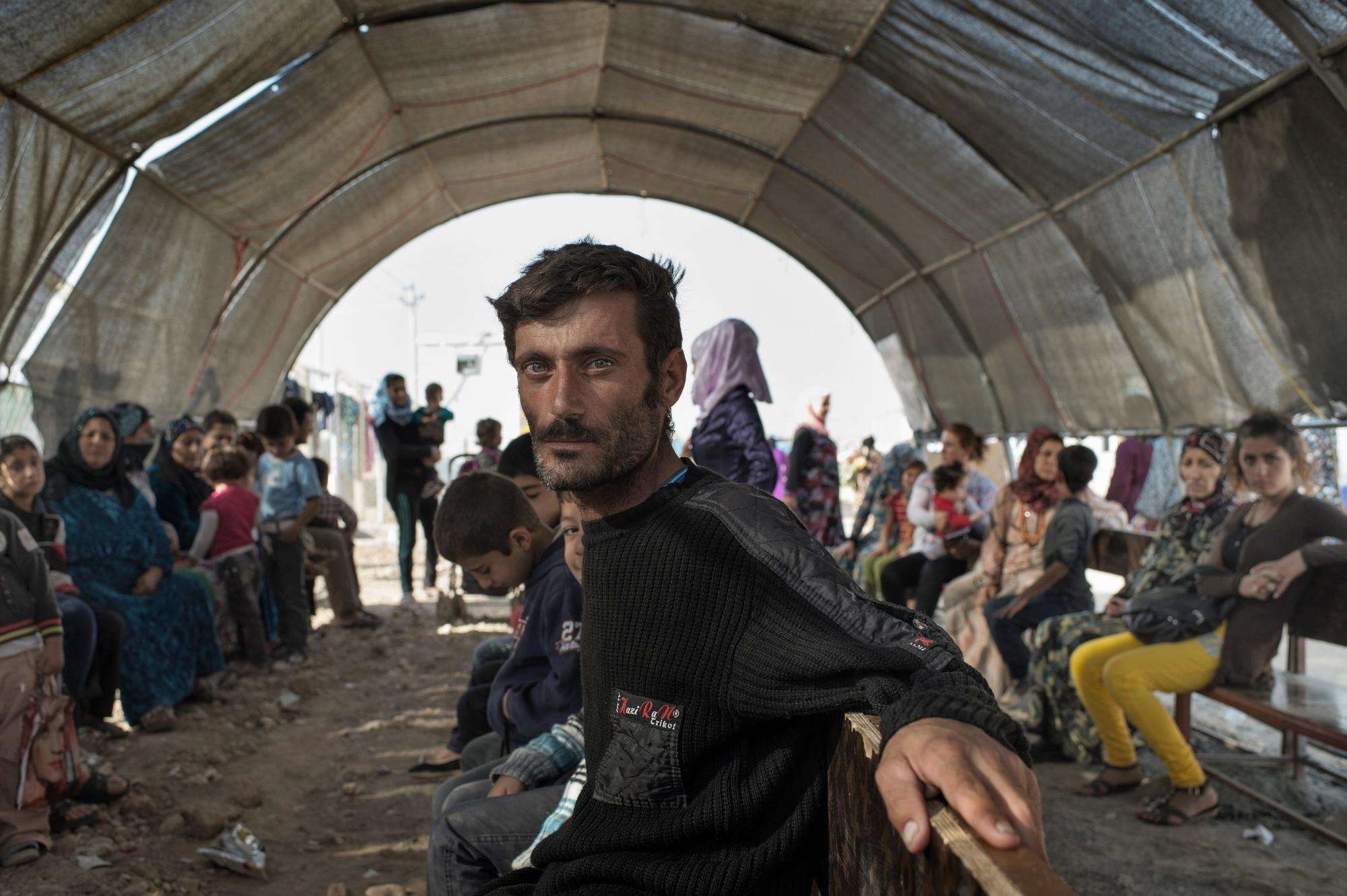Not long ago, when refugees were streaming out of Iraq, fleeing that country’s war, it was unthinkable that the country would become a sanctuary for others. Its own conflict is ongoing, to be sure, but for many Syrians, Iraq is indeed the safer place.
At the Domiz camp in northern Iraq, for instance, it seemed for months as if more people were arriving and more tents were going up every day. The United Nations estimates that there are now at least 58,000 Syrians there, but unofficial counts put the number well above 60,000. And none of them can answer the most pressing question they have: “When can we go home?”
Domiz wasn’t built to hold so many people. Opened in 2012, it was designed for 1,000 families, a fraction of its current population—which is itself just over one-quarter of the overall number of Syrian refugees in Iraq. There have been improvements in the water and sanitation systems, which, early on, were woefully insufficient. Shelter options and the general sense of order have also improved, residents say, and some have started businesses. But they still face serious health problems, and MSF has expanded its services as the population has grown.
MSF’s medical team leader, Dr. Mustapha Khalil, a specialist in emergency medicine, is a refugee himself who fled his home in Syria with his wife and young son last year. Arriving to MSF’s clinic in Domiz early in the morning, he’s greeted by the familiar sight of dozens of people assembled in the outdoor waiting area and the familiar sounds of children crying inside.
Soon after entering the ward, Khalil sees a six-year-old boy with ear and respiratory infections, another boy who was scalded by boiling water when a pot inside his tent toppled over, a mother whose baby has a urinary tract infection, a girl who needs stitches for a large cut on her finger, and an older woman who arrives very pale and struggling to breathe. “Every morning is like this,” he says.
Initially, MSF offered primary health care, mental health care, and referral services for emergency cases. As time passed and the needs grew clearer, chronic disease care—for hypertension and diabetes, in particular—was integrated. In essence, the project reacted to the medical and psychological needs that grew out of the war, and the circumstances into which it drove this particular population.
“People have suffered a lot in Syria,” says Henrike Zellman, an MSF psychologist who worked in the camp. “A lot of families were torn apart.” Many were also injured or lost loved ones or lost their homes. Now they don’t know how long they’ll be in exile or if there will be anything to return to should the war ever end. “If anybody could tell them, ‘okay, you have to stay here for another two months, and then the situation will be over, and you can go back home,’ people would cope easily,” says Zellman. “But nobody can actually tell them when they can leave.”
In 2012, around 7 percent of MSF’s mental health patients displayed symptoms of a severe psychological disorder; in 2013, 15 percent did. MSF’s mental health team in Domiz—Zellman, two Syrian psychologists and three mental health counselors (two Syrian, one Iraqi Kurdish)—conducted seven to nine sessions per day, during which they heard most frequently of depression and anxiety from adults, and nightmares, problems sleeping, and bedwetting among children. Given the ferocity of the war and the way the body and mind process trauma, this is hardly surprising, Zellman says: “They are just reacting normally to very un-normal events.”
It’s a new experience, living in a densely-packed refugee camp where disease can flourish; certain precautions must be taken. MSF therefore built an active outreach component into its work in Domiz, something primarily carried out by community health workers, or CHWs, who traverse the camp to survey health needs and talk to people about things they can do to prevent illness and injury.
On this afternoon, two CHWs, Falak and Rabea—both Syrian refugees and camp residents themselves—enter a tightly packed warren of tents, then ask a woman named Layla if they can speak with her. When she says yes, Falak and Rabea remove their shoes and enter her tent. The interior is spotless. Rugs cover the ground. Mattresses, pillows, and blankets are stacked neatly along one wall. Layla tells her visitors to sit and serves them tea.
Falak and Rabea tell her about MSF’s services. They ask about the children’s health and talk to them about the importance of washing their hands. They cover many of the same topics with others they visit, too, adapting their focus when needed. To a mother with a newborn, they talk about the importance of breastfeeding. To people reporting gastrointestinal problems, they talk about diet, nutrition, and, again, hygiene. And they urge one and all to visit MSF’s clinic if they need any medical or psychological assistance.
Though cordial, the visits underscore the degree to which refugees in Domiz are at the mercy of their situation. Driven here by war, they found some sanctuary, but the pain, the worry, and the wondering all remain.
In 2013 alone, MSF conducted more than 130,000 medical consultations for Syrian refugees in Domiz and another 50,000 consultations for Syrians at two other camps in northern Iraq. And the pace of operations at these projects has not slowed at all in 2014.





